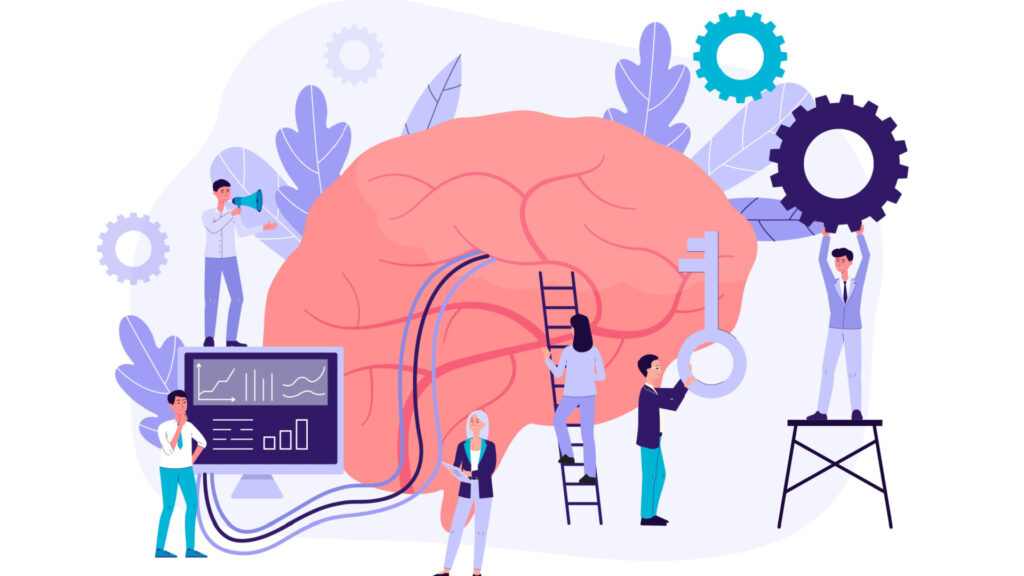Inside our brains, there are lots of thoughts and feelings. Neuromarketing is a smart way to understand these feelings and how people decide to buy things. It’s becoming more popular, and by 2030, it’s expected to be a $21,218 million industry, growing at a rate of 8.9% every year. Even though big companies use it a lot, many people don’t really know what neuromarketing is. Neuromarketing is like using brain science to help businesses talk to customers better. It guides people in making good choices when they buy things and forming new habits.
Let’s start with the basics of what neuromarketing is before we explore how it really affects the way people decide to buy things.
Table of Contents
The Basics of Neuromarketing
Neuromarketing is an area of study that utilizes neuroscience methods to understand how the brain responds to marketing stimuli. In basic terms, it involves capturing brain activity. It uses tools like functional magnetic resonance imaging (fMRI) and electroencephalography (EEG) while individuals experience various marketing materials. This approach aims to uncover subconscious reactions. It provides insights into consumer behavior that traditional methods may overlook.
The primary objective of neuromarketing aligns with other marketing techniques. It focuses on effective resource allocation for building customer relationships, enhancing customer care, retaining customers, and maximizing profits. The uniqueness of neuromarketing lies in its ability to delve into the subconscious. It offers valuable insights for strategic decision-making.

Companies such as Time Warner, NBC, and Facebook have embraced neuromarketing to gain a deeper understanding of customer engagement. Collaborating with researchers from Microsoft and Google, these companies explore users’ brain responses to different content, revealing hidden aspects of consumer reactions.
Role of Primal Brain
Our brains work in two ways, according to Nobel laureate Daniel Kahneman. There’s the thinking part that influences decisions (the rational brain). The other part guides attention, trust, and intuition (the primal unconscious brain). The primal brain, which we share with animals, is all about decision-making. It reacts to six key things, giving marketers a way to connect with people effectively:
- Focus on solving problems that matter to people, like survival and well-being.
- Make choices in ads super clear, so people can easily decide.
- Use something familiar that people recognize, like evidence, familiar terms, and things they know.
- Since people forget a lot, make ads with strong beginnings and endings to grab and keep attention.
- People love pictures, so use eye-catching visuals to get your message across.
- Stir emotions because they help people make decisions.
By understanding these points, marketers can make ads that really connect with people and influence their choices.
Where Neuromarketing Guides Companies
Neuromarketing researchers play a crucial role in advising companies across six key realms.
Advertising
Neuromarketing helps with the effectiveness of ads. It reveals that sometimes, less attention leads to better results.
Branding and Brand Loyalty
Strong brands linger in our minds. Neuromarketing explores how deep-rooted memories influence brand resistance, often without consumers realizing it.
Entertainment
Understanding what makes entertainment appealing is tricky for consumers. Neuromarketing steps in to dissect how entertainment impacts the brain.
Online Marketing
With the instant nature of online shopping, neuromarketing explores the dynamics of quick decision-making. It helps marketers time their messages effectively.
Product Design
Predicting consumer preferences before launching a product is challenging. Neuromarketing offers insights into anticipating excitement or potential indifference toward new products.
Shopping
Whether in-store or online, neuromarketing recognizes the overwhelming information shoppers face. It sheds light on how situational factors can override conscious choices in the shopping journey.
Techniques and Tools of Neuromarketing Research
Neuromarketing tools help marketers see how their sales efforts affect people’s minds without them even realizing it. These tools use technology to help understand why consumers behave the way they do. Now, let’s check out a few of these tools that neuromarketers use.

Facial coding systems
Back in the 1970s, a psychologist named Paul Ekman figured out a cool way to understand how people show emotions on their faces, no matter where they’re from. He made a system called the Facial Action Coding System (FACS). It links facial expressions to six basic feelings like happiness, sadness, anger, fear, disgust, and surprise. This system looks at pictures taken super quickly as our facial muscles move.
Usually, smart people (trained coders) are great at using FACS to figure out how someone is feeling by studying these pictures. The only hitch is that they usually can’t do it in real-time. But now, we have advanced technology. There are computer systems that can do the job in real-time by watching your face through a webcam. This makes it way easier to understand how someone is feeling just by looking at their expressions.
Eye tracking
Our eyes follow what we find interesting. When we look at ads or pictures, the way our eyes move, how often we blink, and how long we stare at things can show how we feel about them. If we look at something for a long time, it might mean we’re finding it a bit tricky to understand. A quick look suggests we get it. When our eyes jump between things, it shows if we’re ready to move on or still thinking. Blinking is like a secret code too.
Fast blinks mean we’re not too interested, and slow blinks mean we’re really focused. If a bunch of people blink together, they’re all reacting the same way. Fast blinking can mean we’re surprised. Then there’s pupillometry, which checks how wide our pupils get. The wider they get, the more the thing we’re looking at affects our feelings. But here’s the thing – it doesn’t tell us if we like it or not. And the cool part? Now, machines can do all these measurements without us even noticing.
Listening to blood flow in the brain
Functional magnetic resonance imaging (fMRI) measures brain activity by observing changes in the blood oxygenation level-dependent (BOLD) signal. When a specific brain area is more active, it consumes more oxygen, reflected in altered BOLD signals. This allows the estimation of the impact of marketing stimuli on the brain. However, there’s a drawback to using fMRI for measuring brain activity. It takes about 8 seconds to capture an image. Within this timeframe, individuals may shift their attention to another stimulus. Fortunately, neuromarketing researchers employ a more responsive tool to swiftly gauge brain activity.
EEG
Electroencephalography, or EEG, explores the electrical activity of the brain. It’s faster than imaging methods like functional magnetic resonance imaging (fMRI) and positron emission tomography (PET), which create images of brain activity. While it’s impossible to pinpoint exactly where an electrical impulse comes from in the brain with EEG, it can quickly tell us when something is happening in the brain. Knowing that the brain is doing something doesn’t automatically tell us why it matters. However, combining all the tools in neuromarketing provides valuable insights into how the brain responds to marketing efforts.
Neuromarketing acts like a bridge between businesses and the secrets of our minds. As it keeps growing, it’s influencing how we connect with brands and decide what to buy.
Curious about decoding your consumers’ behavior? Connect with us today to explore neuromarketing with a personalized touch.
FAQs
- Is neuromarketing ethical?
Neuromarketing raises ethical concerns because it taps into subconscious decision-making. Critics worry that it manipulates consumers without their awareness. However, many companies follow ethical guidelines, ensuring transparency and consumer well-being.
- How does neuromarketing differ from traditional marketing research?
Traditional marketing relies on surveys and focus groups, which capture conscious thoughts. Neuromarketing, on the other hand, examines subconscious responses using brain-imaging tools and biometric data.
- Can small businesses use neuromarketing?
Yes, while advanced neuromarketing tools like fMRI can be expensive, small businesses can use simpler methods like A/B testing, facial recognition software, and eye-tracking studies to understand consumer behavior.
- Does neuromarketing work on all types of consumers?
Neuromarketing can reveal general trends in consumer behavior, but personal preferences, culture, and emotions also play a role. It works best when combined with traditional marketing strategies.
- What industries benefit the most from neuromarketing?
Industries like retail, advertising, entertainment, and e-commerce use neuromarketing the most. It helps optimize product design, branding, and online shopping experiences by understanding how people react to different stimuli.



















